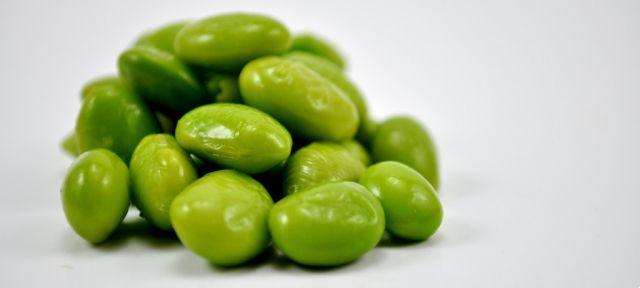
They look like unripe beans, and if you see them at the vegetable counter you don't buy them because you wouldn't know what to do with them.
It's actually soy, protein-rich legume and with multiple health properties, if consumed in the right quantities and in a non-GMO "version".
Specifically, those green beans are Edamame, or soy beans harvested before ripening and cooked (steamed).
Originally, especially in Japan, edamame beans were sold as street food still in their pods, straight from the freshly cut branch of the plant. Edamame has multiple benefits and uses; here are the properties of edamame and how it is cooked.
Read also Yellow soy, benefits and how to use it >>
Edamame: properties
Considering that as far as soy - and food in general - is concerned, at the moment it is recommended to choose non-GMO products, the same goes for edamame.
That said, edamame has a large number of beneficial properties:
> Improvement of intestinal transit, thanks to the high fiber content. Let's not forget to drink a lot, to agrvolare the "passage" of the fibers.
> Carsdiovascular protection: thanks to isoflavones
> Support in menopausal disorders: thanks, again to the isofavones, which have a similar structure to the female hormones estrogen
> Control of blood cholesterol levels: soy does not contain cholesterol but has 85% unsaturated fat
> Protection from the effects of free radicals, thanks to the antioxidant molecules
> Ideal for sportsmen and vegans, due to its high content of vegetable proteins: about 36 grams per 100
Edamame: how to cook
How do you cook edamame to make it a tasty dish that is also appreciated by skeptics? A few tips:
> As a starter: the edamame pods are lightly boiled in salted water, then peeled, salted on the surface and eaten as an aperitif or snack. They remain very crunchy
> To dress pasta or rice: Quickly steam the edamame beans in their pods and add them to a tomato sauce
> In soups or broths: towards the end of cooking, add the edamame beans previously steamed in their pods and shelled. We can complete with a handful of sunflower seeds and a tablespoon of EVO oil.
> In salads: After steaming and shelling the edamame beans, add two cooking spoons to the salads.
We will be able to make avegan salad if we add tofu, sesame and sunflower seeds and green salad to taste (perhaps crunchy iceberg and dried tomatoes), or a vegetarian salad with feta and onions, or a salad with boiled shrimp, parsley and lettuce. We dress with extra virgin olive oil.
Read also Alternative recipes of Japanese cuisine >>


























